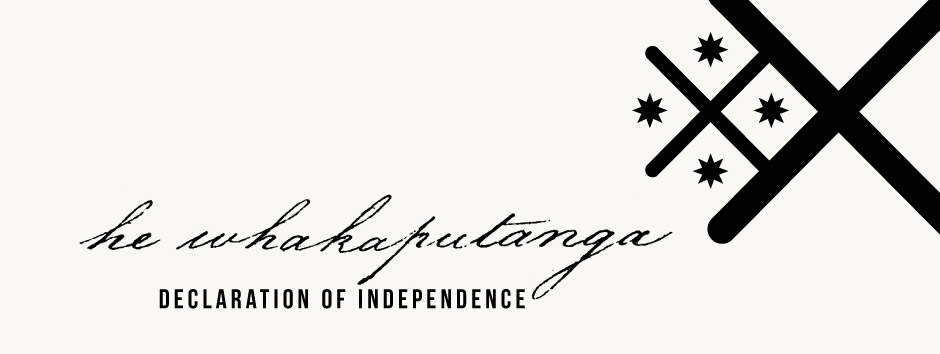Signing details
Wharepoaka was the son of Rākau, an influential tohunga (spiritual leader) based at Rangihoua. An important rangatira of Te Hikutū, Wharepoaka also had a number of notable brothers and sisters, including Wharemōkaikai, Te Uri-o-Kanae, Rahu and Karuhi. His sister Rahu was married to Ruatara, the leading rangatira of Te Hikutū, while Karuhi married the Danish trader Phillip Tapsell (Tapsell’s acceptance in Maketū was helped by Wharepoaka’s marriage to a high-born woman of Te Arawa). When Ruatara died in 1815, Wharepoaka became the principal military leader of Te Hikutū. He grew in importance during the 1820s and 1830s alongside his brother-in-law Waikato (who was married to Wharepoaka’s sister Hira).
Wharepoaka lived at the large kāinga of Rangihoua, which in 1814 became the home of New Zealand’s first mission station. Said to be friendly and intelligent, Wharepoaka had many relationships with Pākehā, and formed a lasting relationship with the missionary Samuel Marsden. When Wharepoaka followed the Christian custom of giving his sister Karuhi away during her wedding to Tapsell, it was Marsden who officiated. Two of Wharepoaka’s daughters also grew up in the household of missionary John King. When his eldest daughter, Whitirua, died in June 1833, Wharepoaka consented to a Christian service before she was buried in the urupā (burial ground) on the summit of Rangihoua.
However Wharepoaka was never baptised, and at one stage argued that missionaries were bewitched people. Yet he seems to have remained outside of the anti-missionary Nākahi movement, which was influenced by the teachings of the prophet Papahurihia.
Wharepoaka told Marsden of the many taua in which he had taken part, including the 1825 battle of Te Ika-a-Ranganui with Ngāti Whātua, Te Roroa and associated hapū. Wharepoaka is said to have been severely wounded during the battle and only survived thanks to an operation performed by Hongi Hika. A brave and capable leader, he was also a key player during the ‘Girls’ War’ of March 1830.
His mana was put to important use in April 1831, when Wharepoaka visited Governor Darling in Sydney to protest the actions of John Stewart, master of the brig Elizabeth. In October 1830 Stewart had transported a party of Ngāti Toa warriors from Kāpiti Island to Banks Peninsula to attack Ngāi Tahu. Ngāpuhi were concerned that Europeans were becoming involved in inter-tribal warfare, and that the peaceful alliance between Māori and Europeans, sealed when Hongi Hika and Waikato visited King George IV in 1820, was in danger. After meeting with Wharepoaka, Governor Darling wrote to the Colonial Office on 13 April suggesting that a British Resident be appointed in New Zealand. Wharepoaka's visit, and the 1831 letter to King WIlliam IV, lead to the appointment of James Busby in 1832.
In 1834 a German visitor wrote of Wharepoaka: '[T]rousers, socks and shoes were blue, waistcoat and scarf coloured, blue jacket and white hat, very much the dress of the captain of a superior merchant ship; a man of perhaps forty, his hair was trimmed in European style, his face was fully tattooed.' [1]
Wharepoaka signed He Whakaputanga on 28 October 1835. Five years earlier he had expressed his concern to Marsden that Māori were dying in large numbers through sickness and war, and that ‘the white people might take the country to themselves.' [2] Late in 1838 Wharepoaka contracted consumption. Historian Angela Middleton notes that he was moved to Te Puna mission, where he died on 17 December 1838.
[1] Angela Middleton, Te Puna – A New Zealand Mission Station: Historical Archaeology in New Zealand, Springer, New York, 2008, p.80.
[2] John Rawson Elder (ed.), The Letters and Journals of Samuel Marsden, 1765–1838, Senior Chaplain in the Colony of New South Wales and Superintendent of the Mission of the Church Missionary Society in New Zealand, Coulls, Somerville, Wilkie and A.H. Reed for the Otago University Council, Dunedin, 1932, p.480.


Community contributions